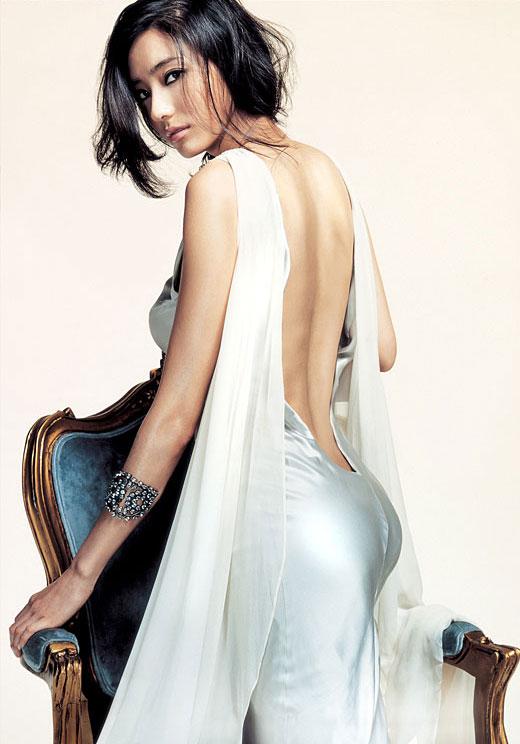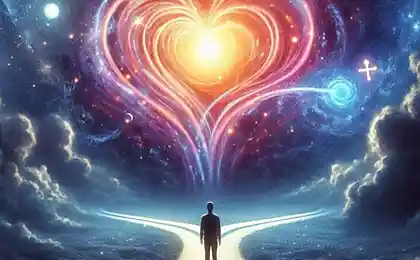1191
FASHION mental status
I want to write about today's fashion, which strongly influences the state of mind, I think. This fashion mania - a type of mood disorder. What is the current image of a successful and prosperous person?

Every age has its fashionable mental states - prestigious emotions, states of consciousness, thought patterns. Sometimes fashion even mental disorders and syndromes pathopsychological. Romantics of the 19th century cultivated fashion for depression - spleen was considered the most suitable for the present state of romance. Madness romance too revered, by the way. Beginning of the 20th century - the era of hysteria. In the 1960s, the fashion was altered states of consciousness and hallucinations. In the 1990s, I remember, too. In our times, by the way, you can see many different mental events.
I want to write about today's fashion, which strongly influences the state of mind, I think. This fashion mania - a type of mood disorder. What is the current image of a successful and prosperous man? He's always good mood, he was not discouraged, it is no bother. He was always doing something - self-fulfilling every minute of his life. He constantly generates creative ideas and interprets and comments on everything he sees.
Actually, all of the above is included in the manic triad. These are the three main symptoms of mania (MS) - constantly elevated mood, acceleration of associative processes and motor activity, the constant pursuit of activities. There are other symptoms, in addition to the triad - they also coincide with the ideal of modern man. Modern man always wants relations and must always be prepared for it. Modern man must always be the best - revaluation of the self is also included in the MS.
Of course, in its extreme form of acute or MS may attract few people - a severe psychotic conditions that occur in serious mental and physical disorders. I'm not a psychiatrist, so write about details MS will not - about it has a fascinating chapter in the national leadership of psychiatry. But in light of severity, in the form of hypomania - it's almost standard for modern man happiness. Many people are guided by this condition as normal, eager to reside in it. And any loss of this state is assessed as negative - something, they say, is wrong with me.
This "rule" is promoted in the media - in a glossy, first and foremost. Cultivated in youth subcultures, where it is fashionable to be constantly on the drive. The image of the modern businessman also appears in popular culture mania - a tireless, constantly on the move, seething ideas, someone would have to absorb or drain. Ironically, in books on pop psychology, this state is also advertised as a norm. They are taught to be always effective, see the positive in everything, to think quickly - it's all about the same manic triad. I'm not talking about advertising - it is possible to study for affective disorders. The advertising images directly link the advertised product with a certain mental state. And often it happens is manic state - note.
And, it would seem, what's the problem? We're all, like, want to be happy and successful. And it is quite natural that in order to achieve that happiness is more suitable way of cheerful, active, savvy person than splenetic slacker. And here is a trick - our thinking is often polar (a disorder in which mania is often called, by the way - bipolar). We think in extremes - if not active, you slacker. If you are not happy, unhappy. If you do not think fast, something stupid. If not creative, it is worthless. Whereas apart from the extremes there is always a third option - the best. Or even a lot of options - individual.
What is the third embodiment of this optimum relative to manic? It is, in fact, normotimicheskoe state - normal, simply. This is when a person has flat calm mood, but not when all the drum. The person experiences emotions that fit the situation. If the situation has, then he is satisfied, fun, joy, even happy. If the situation is unfavorable, he feels sadness, fear, frustration, etc. I mean not only the situation, but also the internal state. After all, sometimes within us all is not well in terms of tone - fatigue, doubt, uncertainty, weakness, stupor - it is normal, because life constantly requires us to inner development. And development is often accompanied by a crisis.
When we talk about negative emotions and low mood, then we come to a fine line - how to distinguish a negative state within the normal range of depressive? I would suggest that such a criterion - how people cope with adverse situations and conditions? If he successfully overcomes them, if they do not knock him out of a rut for a long time, the question of the norm. If a person applies to the problems of passive feeling of powerlessness, making negative predictions did not find a way out - then we can talk about what his mood is moving toward depression.
However, I am not talking about depression and about her pleasant opposites - hypomania. Why it is dangerous to rely on it as the norm?
Firstly, constantly elevated mood and increased activity is not always economically justified - it is part of life "is not the means" mentality. The forces of the body and the mind is limited. Increased activity, if you do not stop in time, and is fraught with physical and mental exhaustion. In a state of exhaustion it is certainly not up to the effectiveness and creativity.
Second, if the demand from myself constantly good mood, you have to deny and suppress negative emotions. But in any activity we are faced with problematic situations when it is appropriate to feel anxiety, depression, sadness, frustration, etc. Problems will be denied, and the emotions will not live, and suppressed. Also to be ignored, such as the natural state of fatigue, lethargy, confusion - the brain simply will not have time to process information, to complete the work and leisure (I once wrote about it) .Poluchaetsya if cultivated manikalnoe state as the norm, it is possible to come to internal conflict, neurosis. Another thing is that sometimes neurosis - is not the result of excessive demands to the status and reason. Fashion for manic with particular zeal pick people who already something a reject, forbid themselves to be different - including the weak, sad, and just relaxed. And here we come to the third contraindication.
Third, each person has its own constitution, its own temperament, his character. So, everyone has their own internal rate of activity and mood. Someone mental processes faster, someone slower someone stable, someone unstable - a psychophysiological given each of us. And this reality has the character and diverse personal features are imposed. And if they do not have a constant cheerfulness, we have to force yourself, to abuse the resources of the body for the sake of compliance with the newly-minted "norm". It's a matter of self-acceptance and his innate and acquired features.
What is the conclusion?
I think each of us has a choice. We can perceive the fashion of mental states without criticism, as something self-evident. In that case we will have to get into the fact that we are not particularly suitable. This can lead to internal conflict and mental exhaustion. You can think of fashion and norms of society critically. They can try on and discard them if they do not fit. And they are suitable or not, we will say our feelings and emotions - including, and negative.

Every age has its fashionable mental states - prestigious emotions, states of consciousness, thought patterns. Sometimes fashion even mental disorders and syndromes pathopsychological. Romantics of the 19th century cultivated fashion for depression - spleen was considered the most suitable for the present state of romance. Madness romance too revered, by the way. Beginning of the 20th century - the era of hysteria. In the 1960s, the fashion was altered states of consciousness and hallucinations. In the 1990s, I remember, too. In our times, by the way, you can see many different mental events.
I want to write about today's fashion, which strongly influences the state of mind, I think. This fashion mania - a type of mood disorder. What is the current image of a successful and prosperous man? He's always good mood, he was not discouraged, it is no bother. He was always doing something - self-fulfilling every minute of his life. He constantly generates creative ideas and interprets and comments on everything he sees.
Actually, all of the above is included in the manic triad. These are the three main symptoms of mania (MS) - constantly elevated mood, acceleration of associative processes and motor activity, the constant pursuit of activities. There are other symptoms, in addition to the triad - they also coincide with the ideal of modern man. Modern man always wants relations and must always be prepared for it. Modern man must always be the best - revaluation of the self is also included in the MS.
Of course, in its extreme form of acute or MS may attract few people - a severe psychotic conditions that occur in serious mental and physical disorders. I'm not a psychiatrist, so write about details MS will not - about it has a fascinating chapter in the national leadership of psychiatry. But in light of severity, in the form of hypomania - it's almost standard for modern man happiness. Many people are guided by this condition as normal, eager to reside in it. And any loss of this state is assessed as negative - something, they say, is wrong with me.
This "rule" is promoted in the media - in a glossy, first and foremost. Cultivated in youth subcultures, where it is fashionable to be constantly on the drive. The image of the modern businessman also appears in popular culture mania - a tireless, constantly on the move, seething ideas, someone would have to absorb or drain. Ironically, in books on pop psychology, this state is also advertised as a norm. They are taught to be always effective, see the positive in everything, to think quickly - it's all about the same manic triad. I'm not talking about advertising - it is possible to study for affective disorders. The advertising images directly link the advertised product with a certain mental state. And often it happens is manic state - note.
And, it would seem, what's the problem? We're all, like, want to be happy and successful. And it is quite natural that in order to achieve that happiness is more suitable way of cheerful, active, savvy person than splenetic slacker. And here is a trick - our thinking is often polar (a disorder in which mania is often called, by the way - bipolar). We think in extremes - if not active, you slacker. If you are not happy, unhappy. If you do not think fast, something stupid. If not creative, it is worthless. Whereas apart from the extremes there is always a third option - the best. Or even a lot of options - individual.
What is the third embodiment of this optimum relative to manic? It is, in fact, normotimicheskoe state - normal, simply. This is when a person has flat calm mood, but not when all the drum. The person experiences emotions that fit the situation. If the situation has, then he is satisfied, fun, joy, even happy. If the situation is unfavorable, he feels sadness, fear, frustration, etc. I mean not only the situation, but also the internal state. After all, sometimes within us all is not well in terms of tone - fatigue, doubt, uncertainty, weakness, stupor - it is normal, because life constantly requires us to inner development. And development is often accompanied by a crisis.
When we talk about negative emotions and low mood, then we come to a fine line - how to distinguish a negative state within the normal range of depressive? I would suggest that such a criterion - how people cope with adverse situations and conditions? If he successfully overcomes them, if they do not knock him out of a rut for a long time, the question of the norm. If a person applies to the problems of passive feeling of powerlessness, making negative predictions did not find a way out - then we can talk about what his mood is moving toward depression.
However, I am not talking about depression and about her pleasant opposites - hypomania. Why it is dangerous to rely on it as the norm?
Firstly, constantly elevated mood and increased activity is not always economically justified - it is part of life "is not the means" mentality. The forces of the body and the mind is limited. Increased activity, if you do not stop in time, and is fraught with physical and mental exhaustion. In a state of exhaustion it is certainly not up to the effectiveness and creativity.
Second, if the demand from myself constantly good mood, you have to deny and suppress negative emotions. But in any activity we are faced with problematic situations when it is appropriate to feel anxiety, depression, sadness, frustration, etc. Problems will be denied, and the emotions will not live, and suppressed. Also to be ignored, such as the natural state of fatigue, lethargy, confusion - the brain simply will not have time to process information, to complete the work and leisure (I once wrote about it) .Poluchaetsya if cultivated manikalnoe state as the norm, it is possible to come to internal conflict, neurosis. Another thing is that sometimes neurosis - is not the result of excessive demands to the status and reason. Fashion for manic with particular zeal pick people who already something a reject, forbid themselves to be different - including the weak, sad, and just relaxed. And here we come to the third contraindication.
Third, each person has its own constitution, its own temperament, his character. So, everyone has their own internal rate of activity and mood. Someone mental processes faster, someone slower someone stable, someone unstable - a psychophysiological given each of us. And this reality has the character and diverse personal features are imposed. And if they do not have a constant cheerfulness, we have to force yourself, to abuse the resources of the body for the sake of compliance with the newly-minted "norm". It's a matter of self-acceptance and his innate and acquired features.
What is the conclusion?
I think each of us has a choice. We can perceive the fashion of mental states without criticism, as something self-evident. In that case we will have to get into the fact that we are not particularly suitable. This can lead to internal conflict and mental exhaustion. You can think of fashion and norms of society critically. They can try on and discard them if they do not fit. And they are suitable or not, we will say our feelings and emotions - including, and negative.
A bad cut
Yuri Ryabitsev. "Deep down, people understand that it is unlikely he was born to live as he lives"























